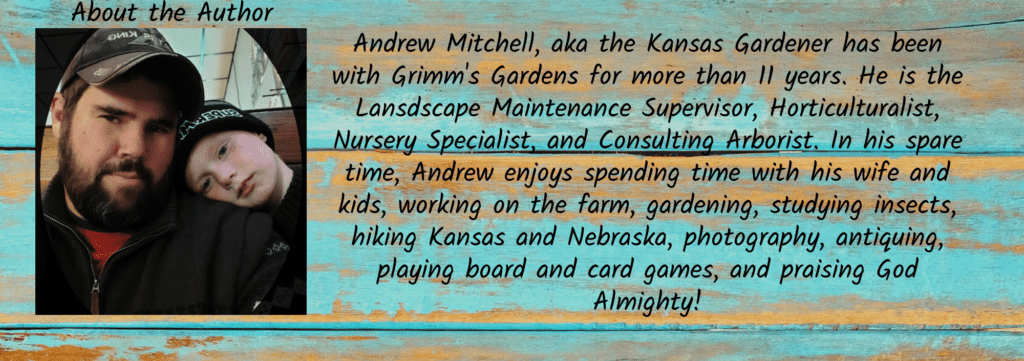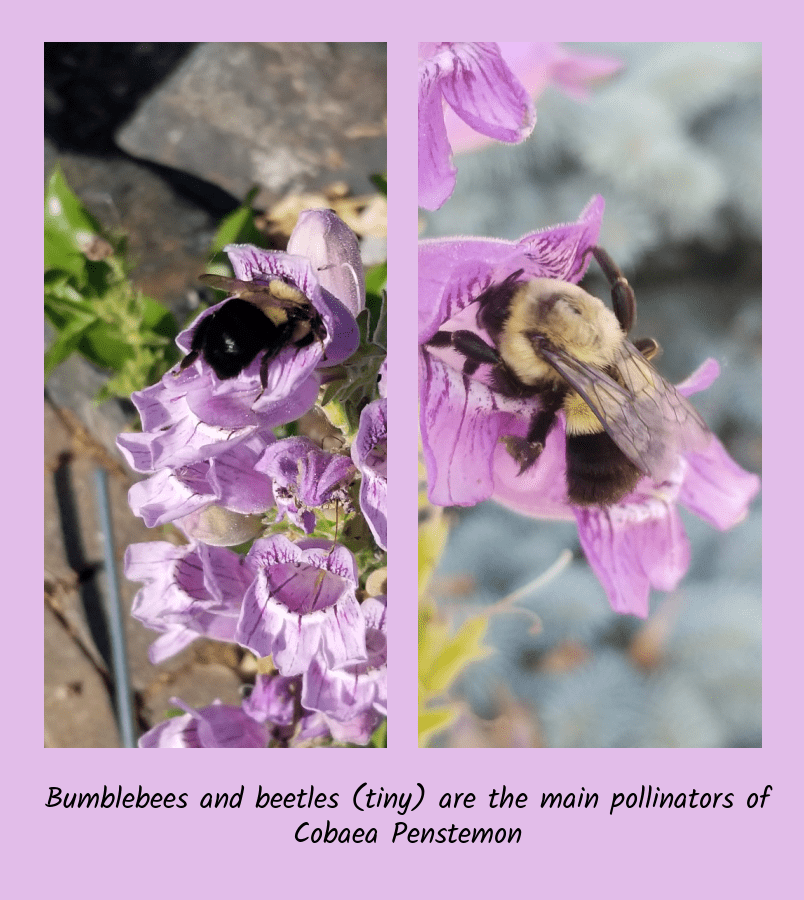What to plant, what to plant? If you are preparing for a succession crop of flowers for pollinators, then June and July might be your biggest months. There are a plethora of plants to pick from. As we have discussed before, pollinators can include bees, butterflies, moths, beetles, flies, bugs, ant, wasps. hummingbirds, and even bats. But I believe most of you want to see the butterflies and bees.
There are so many plants to choose from for attracting pollinators in June and July in the Central Great Plains that I had to select only those from my list which were best suited to gardening. Some of my favorite pollinator plants are bit too rowdy. Such things as common milkweed and woolly verbena. But do not worry, there are plenty left to fill in gaps in your landscape.
June Plants for Pollinators
As I have divided between these 2 months, and the many species, I have left 14 species for each. However, there is a little bit of overlap on species. Number 6 of both June and July are the same plant. And remember, some if not all of these plants are also host plants for some butterflies and moths. So expect to see larval (caterpillar) feeding on the leaves.
1. Betony ‘Hummelo’
A selection made by Piet Oudolf, a renown landscape designer from the Netherlands, this perennial plant in the Stachys genus is a great plant for the border garden. It could also be incorporated into a potager or herb garden. I have several clumps of this plant in my Sunny Cottage Garden, where small, pink flowers in bottlebrush shaped heads arise from 12 inch wide plants. The flower heads reach 12 to 16 inches above the dark green leaves.
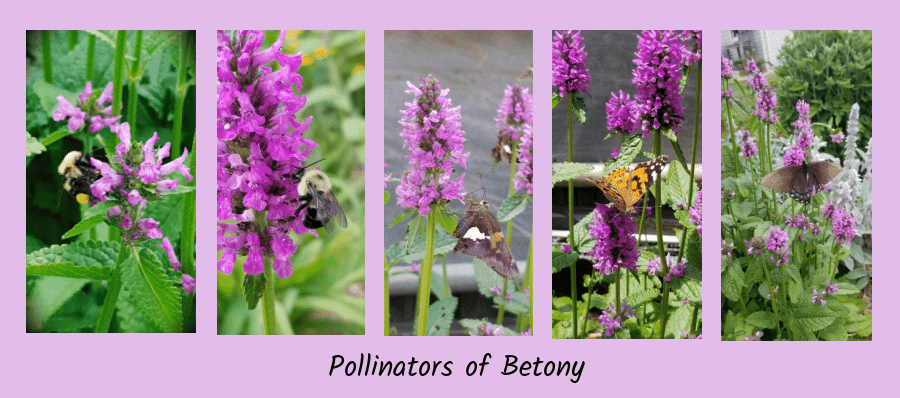
2. Slender Mountain Mint
One of my favorites of the mint family, mountain mints do not travel as speedily as others, such as spearmint or peppermint. Mountain mints are frequented by bees and some butterflies. The flowers are small and white with a pale lavender edge. Leaves on slender mountain mint are narrow and the plants grow 1 to 2 feet tall and can form a clump 3 to 4 feet wide, though it may take several years to get there.
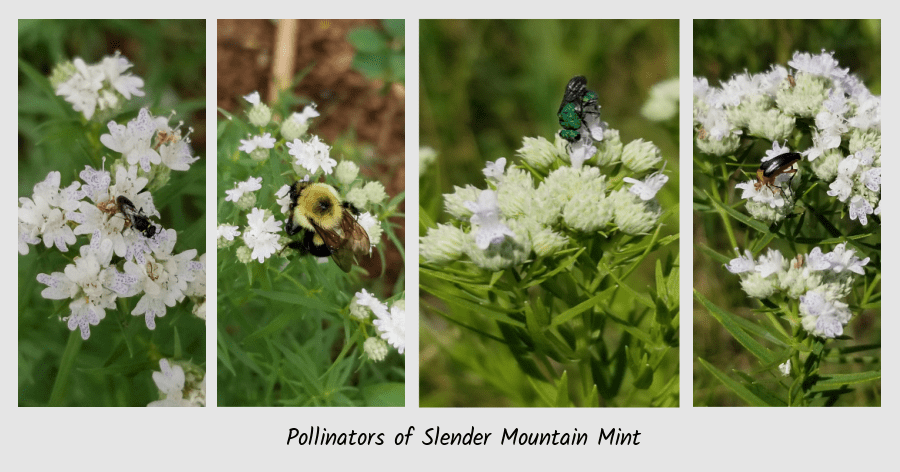
3. Wild Bergamot
The 3rd species in a row from the mint family, bergamot, or beebalm is a favorite of gardeners for attracting hummingbirds, as well as bumblebees. Plants are large and showy, growing 3 to 5 feet tall and wide. Flowers are pale lavender to pink and uniquely shaped. It does spread somewhat aggressively by rhizomes, but can be kept in check if planted in a meadow garden.
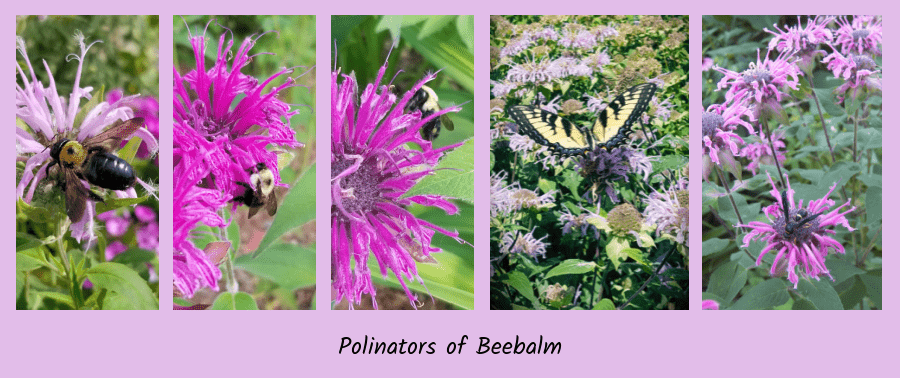
4. Showy Penstemon
Also known as cobaea penstemon, this large flowered beardtongue has pale pink flowers if sourced from Kansas, and dark purple flowers if sourced from Missouri. Both varieties grow 1 to 2 feet tall and wide with shiny green leaves and shell-like flowers. Bumblebees are especially fond of the flowers. 9 moths and 1 butterfly may use the plant for its caterpillars. Best to use it in the rock garden, meadow, or cottage garden.
5. Agastache
While there are quite a few cultivars and species of hummingbird mint, I like the purple flowered ones best for pollinators. Cultivars such as ‘Blue Fortune’, ‘Black Adder’, and ‘Blue Boa’ are among those with this tint. ‘Blue Fortune’ grows large, 4 to 6 feet tall by 3 feet wide, and the others are shorter, 2 to 3 feet tall and 2 feet wide. Agastache attracts many native bees, honeybees, and even hummingbirds. Another member of the mint family which belongs in the border, potager, or cottage garden.
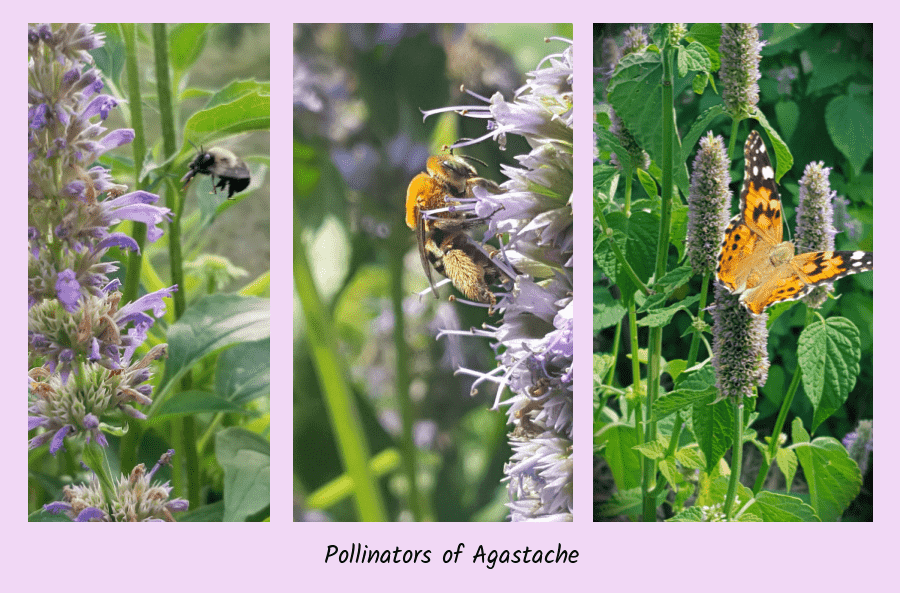
6. Purple Coneflower
Also number 6 for July, this native member of the Aster Family is one of the most widely loved perennials in gardens. There are many hundreds of cultivars available, though I prefer the straight species for most reliable color and longevity. Probably not a true perennial, it reseeds easily into the area it is already growing. At least 5 moths and 2 butterflies use it as a host plant.
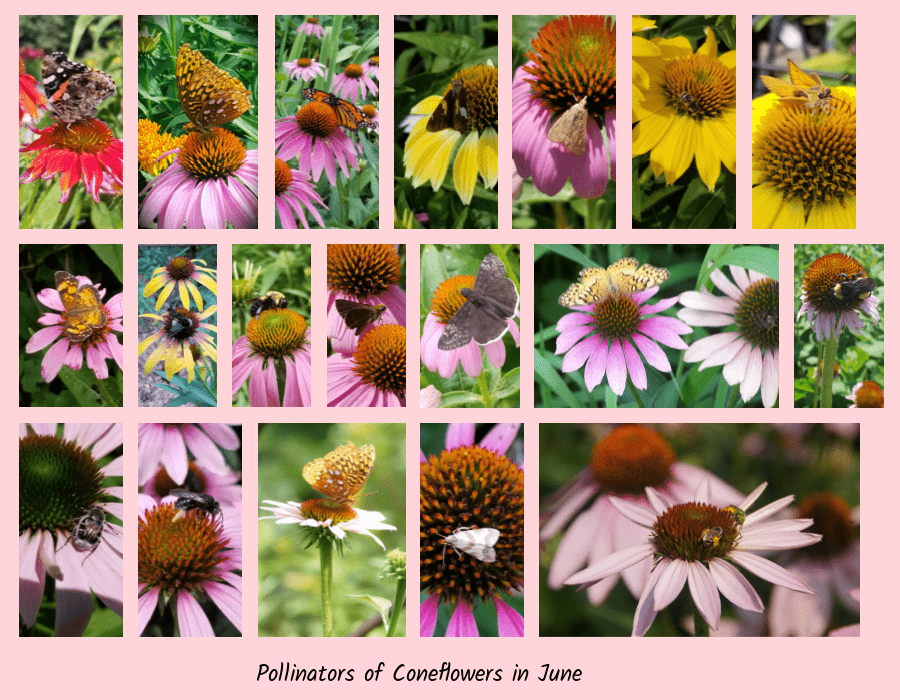
7. Butterfly Milkweed
This ought to be one of the most well-known perennials for butterflies. Butterfly milkweed not only attracts monarch butterflies, but it has a lot of flower power in the garden and attracts many different pollinators. It grows 1 to 2 feet tall and wide with bright orange or yellow flowers. Besides hosting the monarch butterfly, it also hosts the Unexpected Cycnia moth.
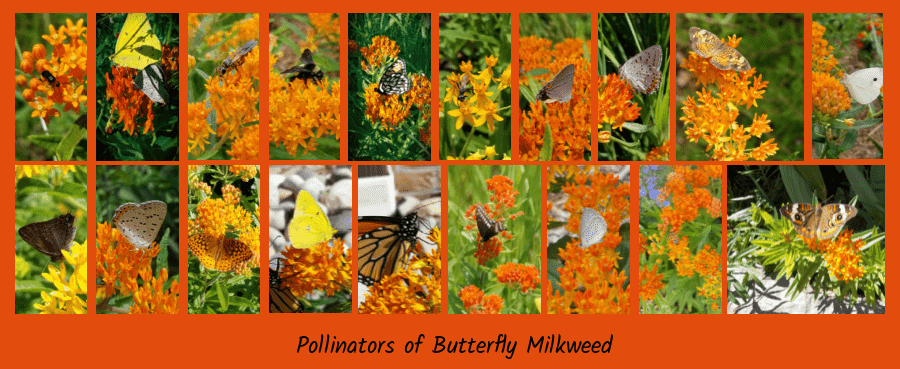
8. Sea Holly
A member of the carrot family, sea holly looks like a thistle. Growing 1 to 3 feet tall and wide with purple green stems, leaves, and purple flowers, it is a favorite for bees and butterflies. The leaves do have sharp spines on the edges so watch out! This plant if best in full sun, and hot, dry locations.
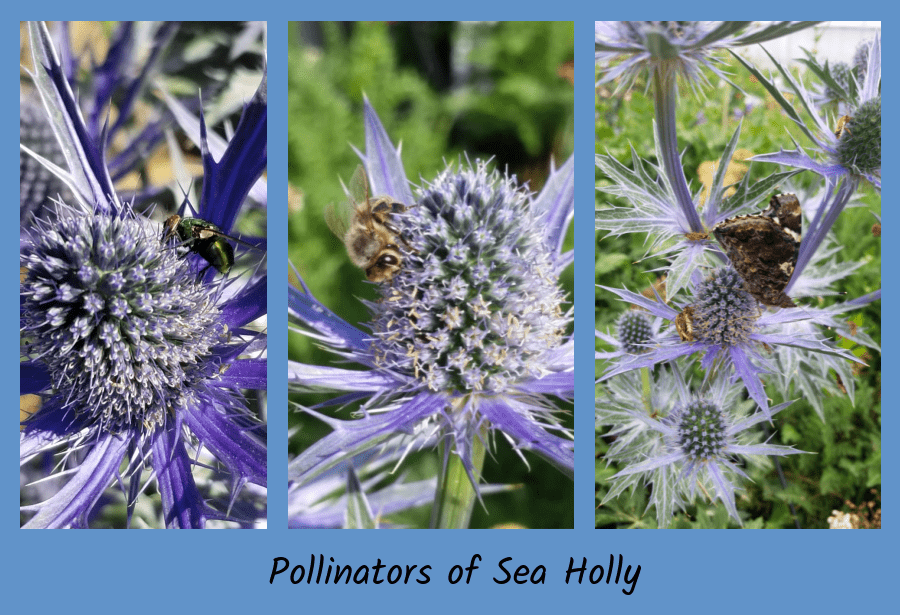
9. Russian Sage
Although it is not native to North America, Russian sage is a great landscape plant, especially with all the new cultivars. Growing 3 to 6 feet tall by 3 feet wide, it has soft, fragrant, gray-green leaves and lavender flowers. The flowers attract many bees. It is best used in borders, meadows, and cottage gardens.
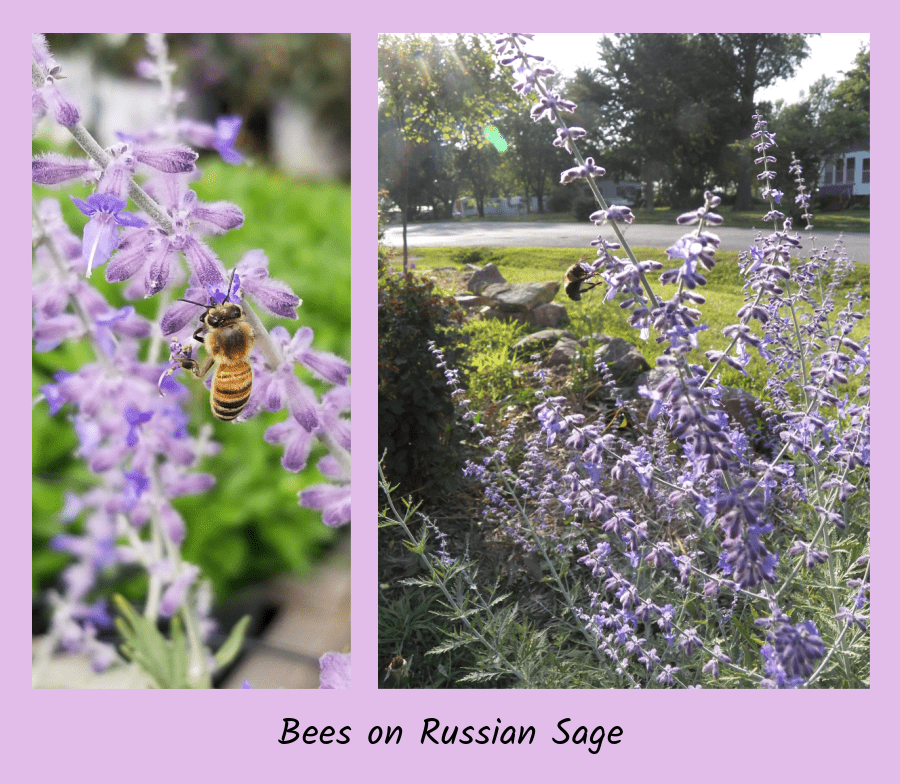
10. Lamb’s Ears
Another Stachys, this perennial belongs in a children’s garden for its large, silvery, soft as newborn lambs, leaves. Besides the amazing leaves, it has 1 to 2 foot tall flower spikes with lavender colored flowers that attract bees and some butterflies. It is best planted in borders, and among other flowers in the potager or herb garden.
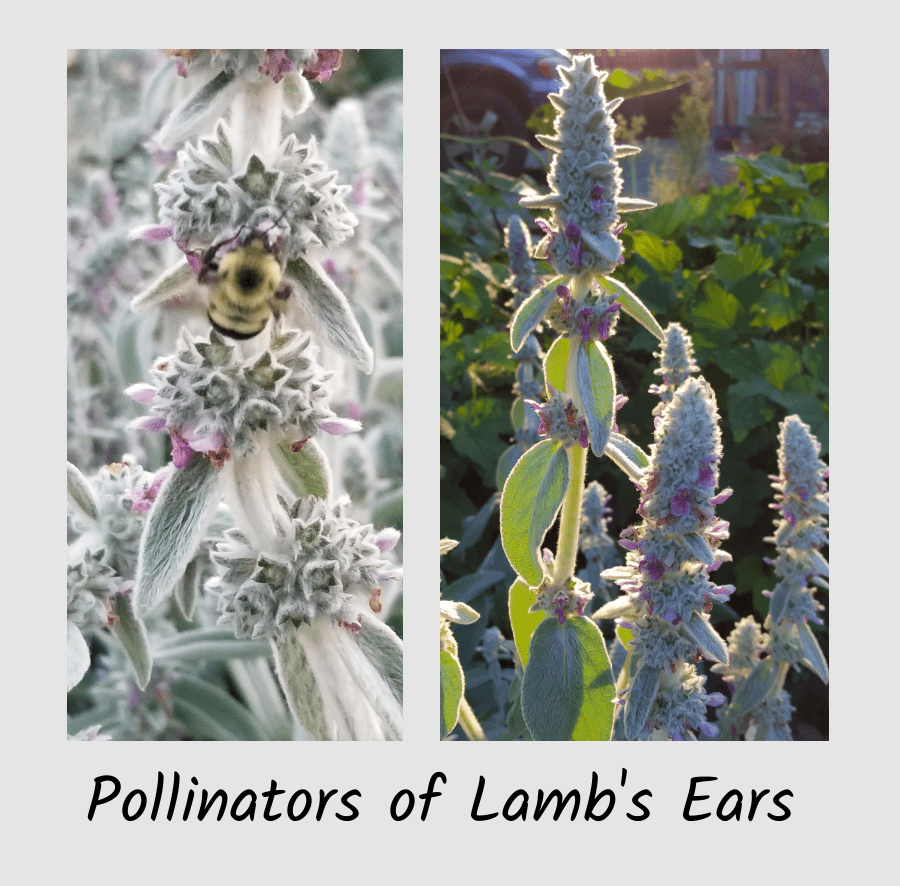
11. Black Eyed Susan
Also known as Rudbeckia hirta or brown-eyed Susan, this is where we get many of our annual, special rudbeckias, such as Denver Daisy. In my own gardens, it grows 1 to 2 feet tall and wide with bright yellow and brown flower heads. Beetles, bees, and butterflies visit the flowers. It can be seeded into a meadow or prairie, or added to the potager or border. A handful of moths and 1 butterfly feed on the plant in their caterpillar stage.

12. Salvia
Just called salvia, but with cultivars such as ‘May Night’, this low perennial is attractive to many bees, butterflies, and hummingbirds. Plants grow 1 to 2 feet tall by 1 to 3 feet wide at maturity. I like to use them in the cottage garden and potager. Flowers can be pink, white, red, or purple. A couple of moth use them as a food source for their caterpillars.
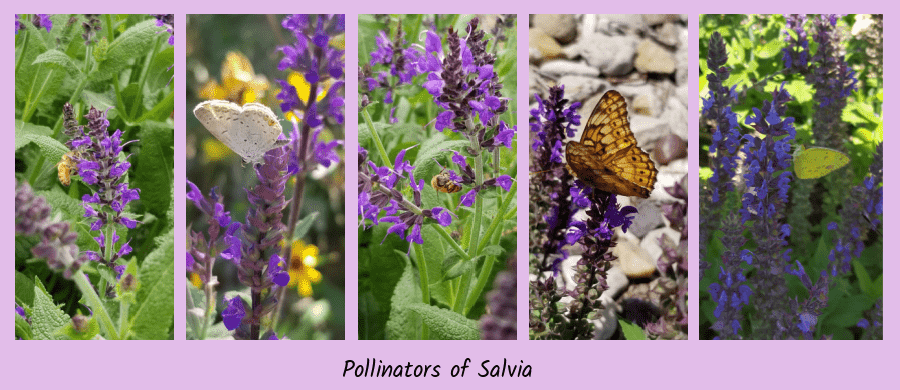
13. Catmint
With so many new and exciting cultivars to choose from, how do you choose? I like the new, smaller plants, that grow 1 to 2 feet tall and wide, versus the older varieties which grow 3 feet tall by 4 to 5 feet wide. ‘Cat’s Pajamas’ may be our best seller ever. These plants have silvery gray-green leaves and lavender colored flowers. Plant them in the border, potager, or cottage garden where they will attract many honeybees and other bees.
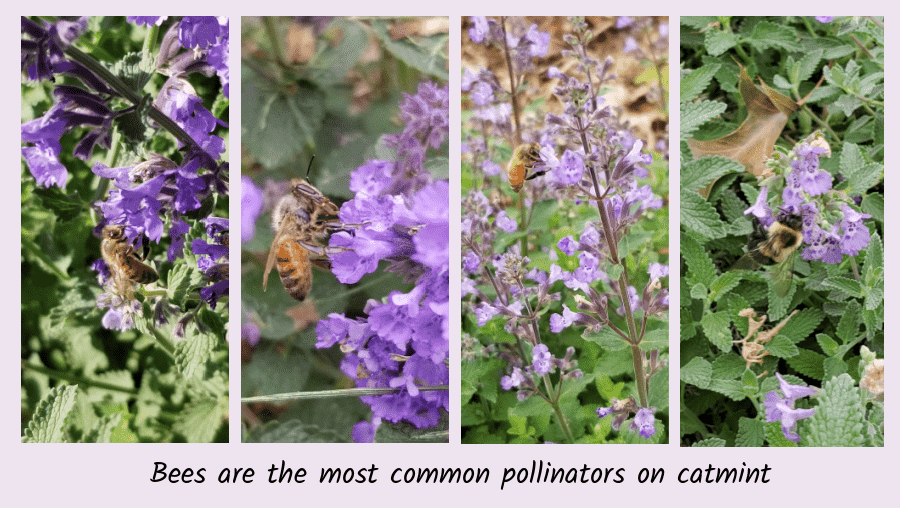
14. Blanketflower
Not a true perennial, but a great reseeding plant, blanketflowers love hot, dry, full sun locations in the border or cottage garden. They can have red, red and yellow, or just yellow flowers. Plants grow 1 to 1 1/2 feet tall and wide with large, disc shaped flowers. They attract bumblebees best, and play host to a few moths and 1 or 2 butterflies.

July Plants for Pollinators
July is the beginning, usually, of heat in the Central Great Plains. And it can be hot! Daily temperatures are often in the 90s, and sometimes sail into the low 100s. And the humidity is high too. But we have some great flowers that not only enjoy the heat, but attract many pollinators to the garden.
1. Spike Blazingstar
I do not think I could have a garden without at least of type of blazingstar. Also known as liatris and gayfeather, blazingstars are bright sticks of pink flowers in a green world. Spike blazingstar grows 1 to 2 feet tall by 1 foot wide and the flowers can be pink or white. I like to plant both pink and white together. They attract bees and butterflies. A couple of moths use the plants as a host. Plant spike blazingstar in borders, meadows, and cottage gardens.

2. Prairie Blazingstar
This blazingstar is taller than the previous one, growing 3 to 5 feet tall by 2 feet wide. Also called thickspike blazingstar, they do not flop even in high winds. The flowers are typically pink, though there are white ones. Plant prairie blazingstar in the back of the border, meadows, and cottage gardens.
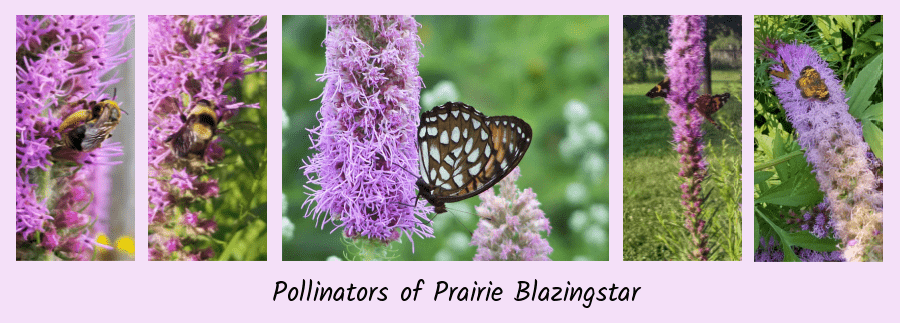
3. Purple Prairie Clover
Not looking like what you may think clover should, this small, arching plant has neon purple/pink flowers in clusters. They attract a lot of bees, especially bumblebees. Plants grow 2 feet tall and wide. 2 butterflies for sure and several others potentially use it as a host plant. Best if planted in meadows, prairies, and cottage gardens.
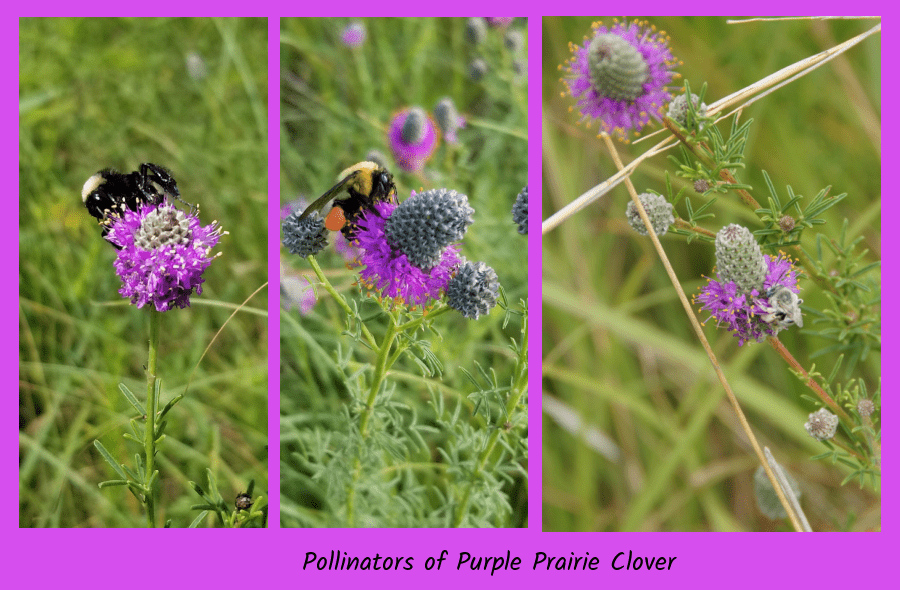
4. Rattlesnake Master
Similar to the sea holly of June, rattlesnake master looks like a crows between a thistle and a yucca plant. The tall plants, growing 5 feet tall and 3 feet wide send up sturdy stems with globular, white flowers. They attract a wide variety of insects and pollinators. Plant them in meadows, prairies, and cottage gardens. A couple of moths use it as a host plant.
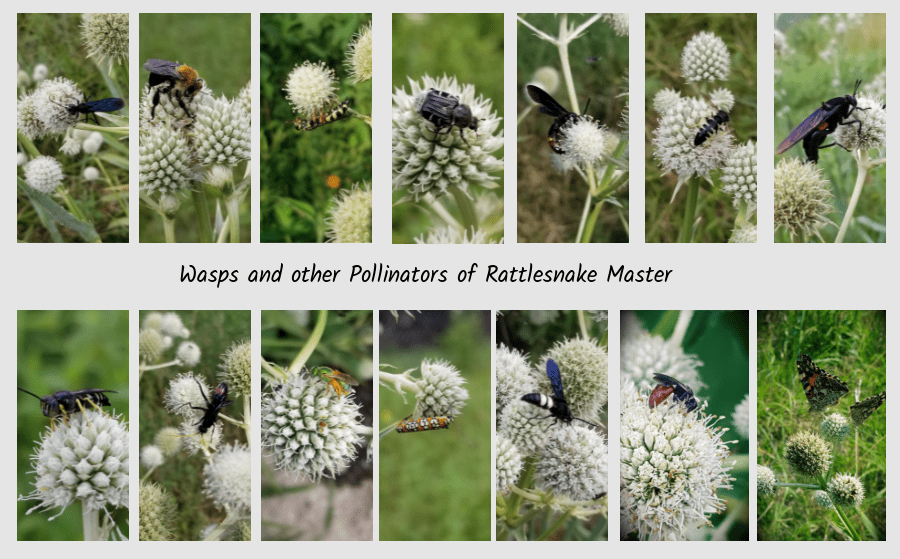
5. Golden Glow
Also known as cutleaf coneflower, this tall member of the rudbeckias thrives in both sun and partial sun. The mound of leaves grows 2 to 4 feet tall and wide and the flower stalks tower up to 7 feet high! Flowers are golden yellow and attractive to bees and butterflies. Plant it at the back of the border, in a meadow, or monarch waystation.
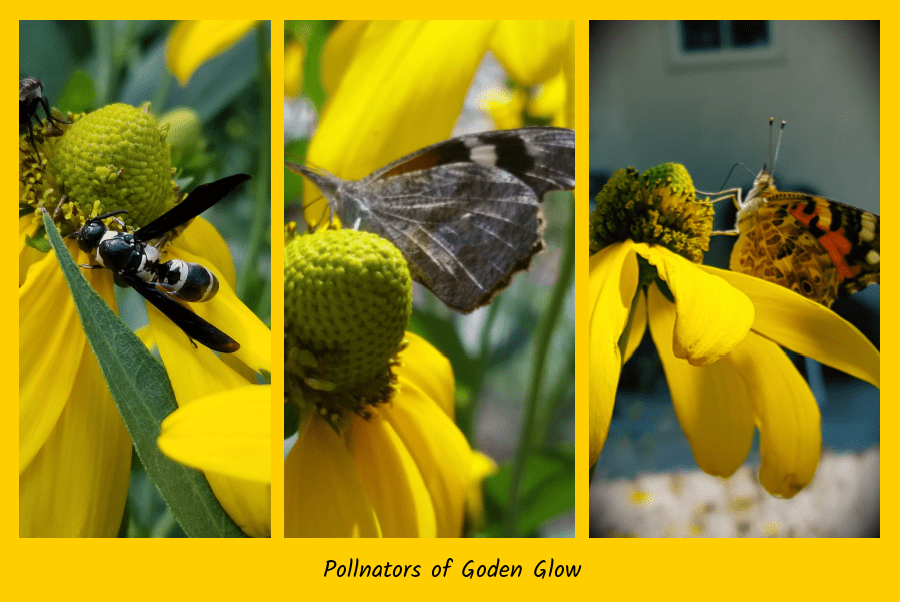
6. Purple Coneflower
Also number 6 for June, this native member of the Aster Family is one of the most widely loved perennials in gardens. There are many hundreds of cultivars available, though I prefer the straight species for most reliable color and longevity. Probably not a true perennial, it reseeds easily into the area it is already growing. At least 5 moths and 2 butterflies use it as a host plant.
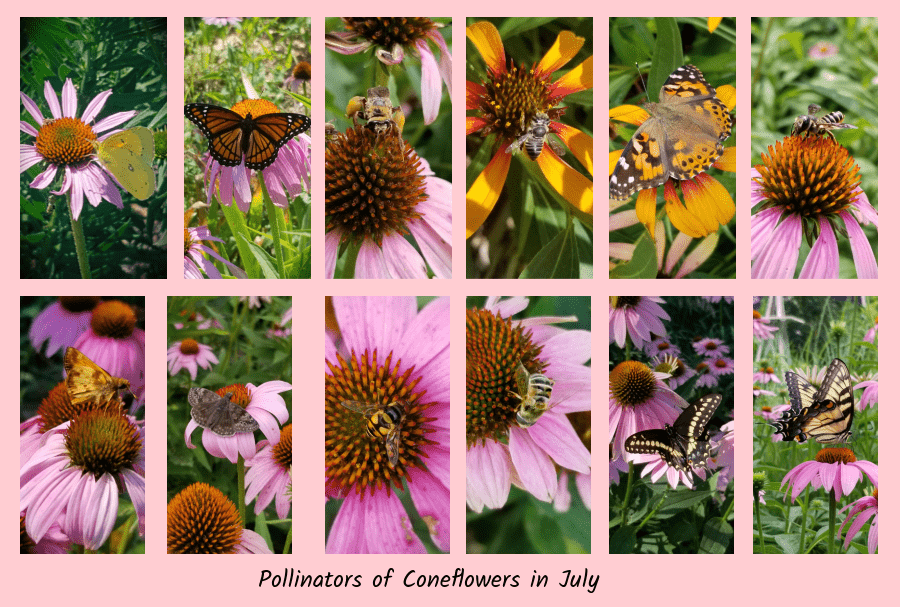
7. Buttonbush
Although this is a shrub and not a perennial or annual, it is one of the best flowering shrubs for pollinators at any time. Growing 4 to 15 feet tall and wide, it is covered with ping-pong ball sized, white flowers which attract bees, butterflies, moths, beetles, and hummingbirds. Plant it in the shrub border, cottage garden, or rain garden. A couple of moths feed on the leaves as caterpillars.
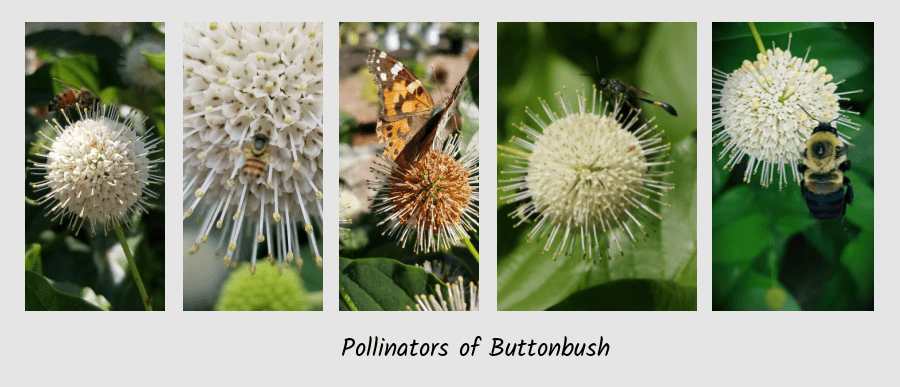
8. Culver’s Root
One of my personal favorite flowers for pollinators, this native perennial can grow in wet or dry soils, in full sun. It grows 3 to 5 feet tall by 2 feet wide with narrow, spear-like flower heads that can be either white, pinkish, or purple. It attracts many bees, flies, beetles, and butterflies. The green leaves are whorled, adding to the overall appearance.
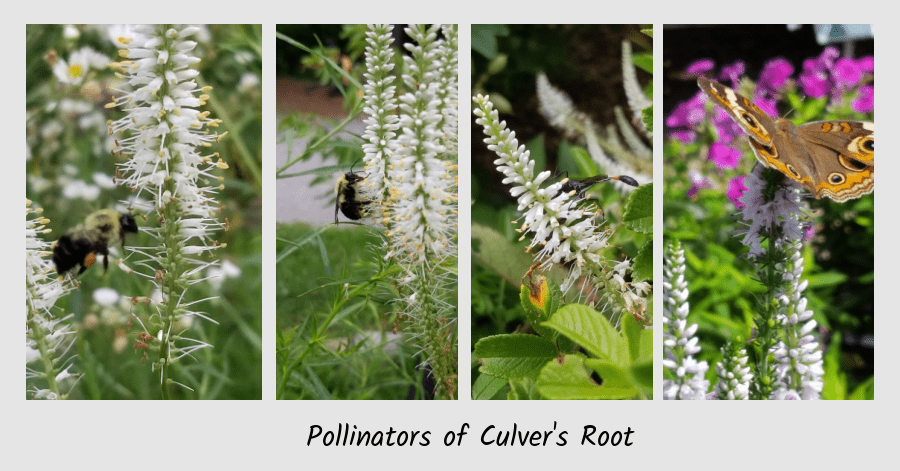
9. Alaska Daisy
I have no idea why it is called that. Daisies are often regarded as a pleasant thing to the eye, but are often invasive in native prairies and meadows. Newer cultivars are less aggressive with their seeds and can be planted in borders, potagers, and cottage gardens. They attract bees, flies, beetles, and butterflies.
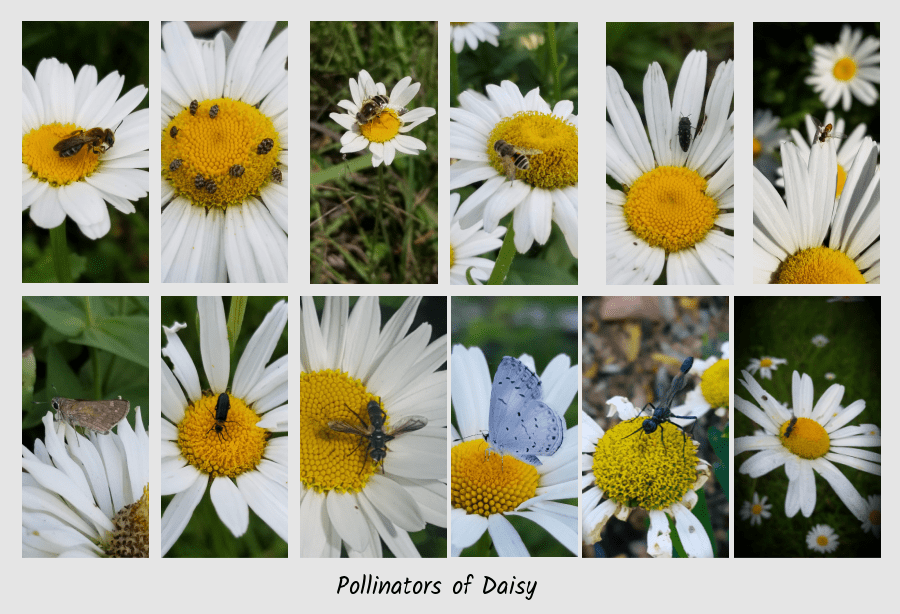
10. Ornamental Onion
There are now several cultivars to choose from, though I still prefer ‘Millenium’. Plants are 1 foot tall and wide and flowers can be white or varying shades of pink. Great as a border plant, they can also be used in herb or potager gardens. Ornamental onions attract bees, butterflies, wasps, beetles, and flies.
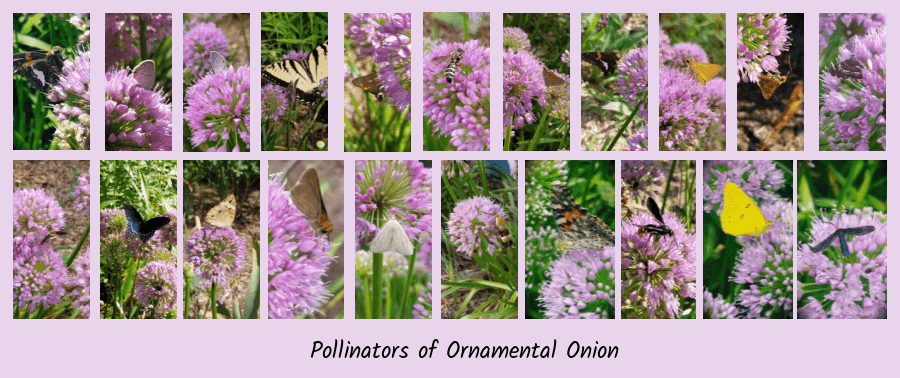
11. Ironweed ‘Iron Butterfly’
A cultivar of Letterman’s ironweed, this short nativar is a must have for the garden. It grows 2 feet tall and wide and blooms in the first year after planting with bright pink flowers. Butterflies and bees love the flowers. Plant ‘Iron Butterfly’ as a border plant, or in meadows, prairies, and cottage gardens. At least 4 species of moth use it as a host plant.
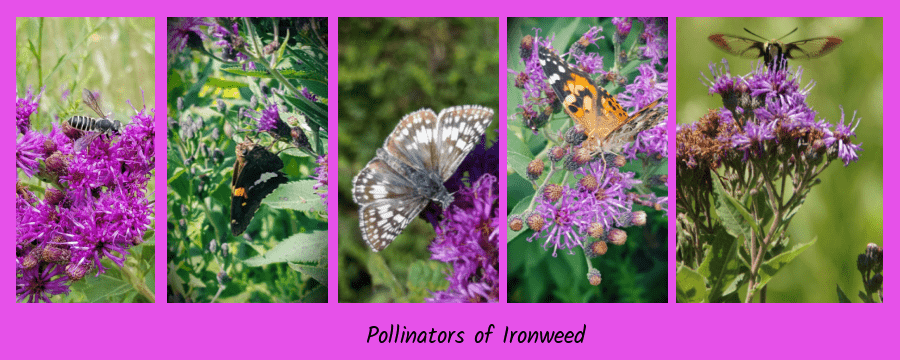
12. Calamint
Related to catmint, this perennial can have white or lavender flowers. If you want something that starts blooming in July and continues nonstop, through drought and heat, until a hard freeze, this is the plant for you. Growing 1 foot tall and wide, it was always blooming in my garden, so it seemed. It mostly attracts small bees and flies, but also some butterflies. Plant it in the border, potager, herb, or cottage garden.
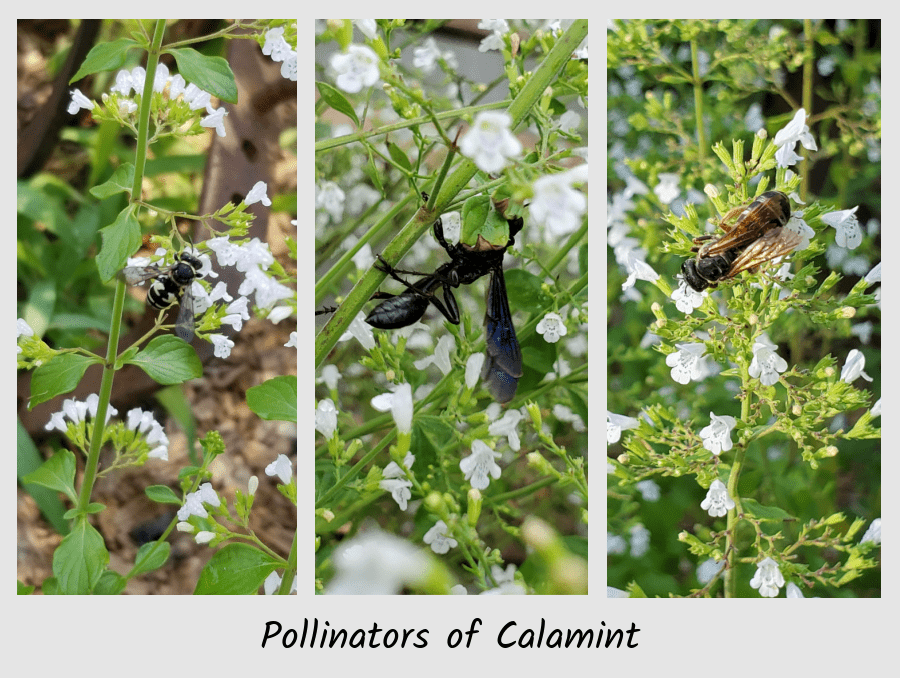
13. Rudbeckia ‘American Gold Rush’
One of my powerhouse favorite plants. This perennial rudbeckia blooms all summer long. Starting usually in July, it blooms right alongside calamint, until a hard freeze. Plants grow 2 feet tall and 3 feet wide and can reseed somewhat, though not aggressively. It attracts bees and butterflies and is a host plant for a couple of butterflies and moths. Plant it in the border, cottage, or potager garden.

14. Garden Phlox
Also known as tall or fall phlox, it is well known for attracting swallowtail butterflies. Beetles and other butterflies also visit. Flowers are usually purple or lavender, but can also be white, pink, or multi-colored. Plants grow 2 to 5 feet tall and 1 to 3 feet wide. Plant garden phlox in the middle of the border, potager, or cottage garden. At least 2 moths use it as a host plant.
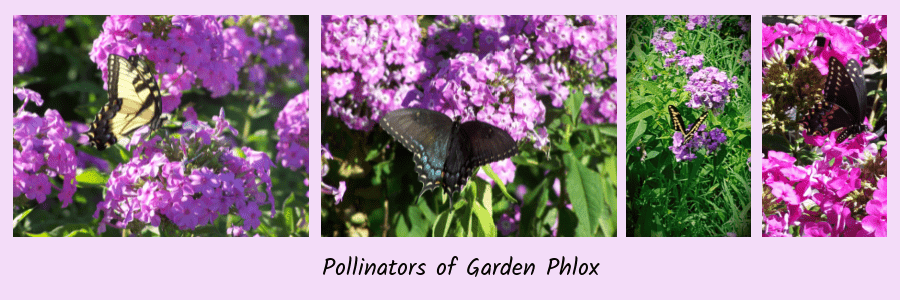
Conclusion
There are a lot of perennials, annuals, shrubs, and trees that provide nectar and pollen to a variety of insect pollinators. Focusing on each month during the growing season will allow you to have continuous bloom throughout the entire season. As you develop your garden spaces, add something from each list until you have that continuous color and available nectar and pollen.
Happy planting!
